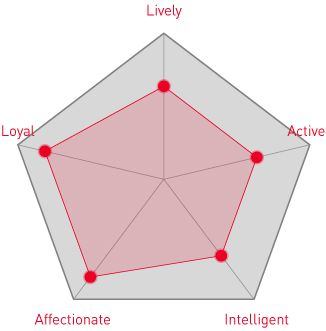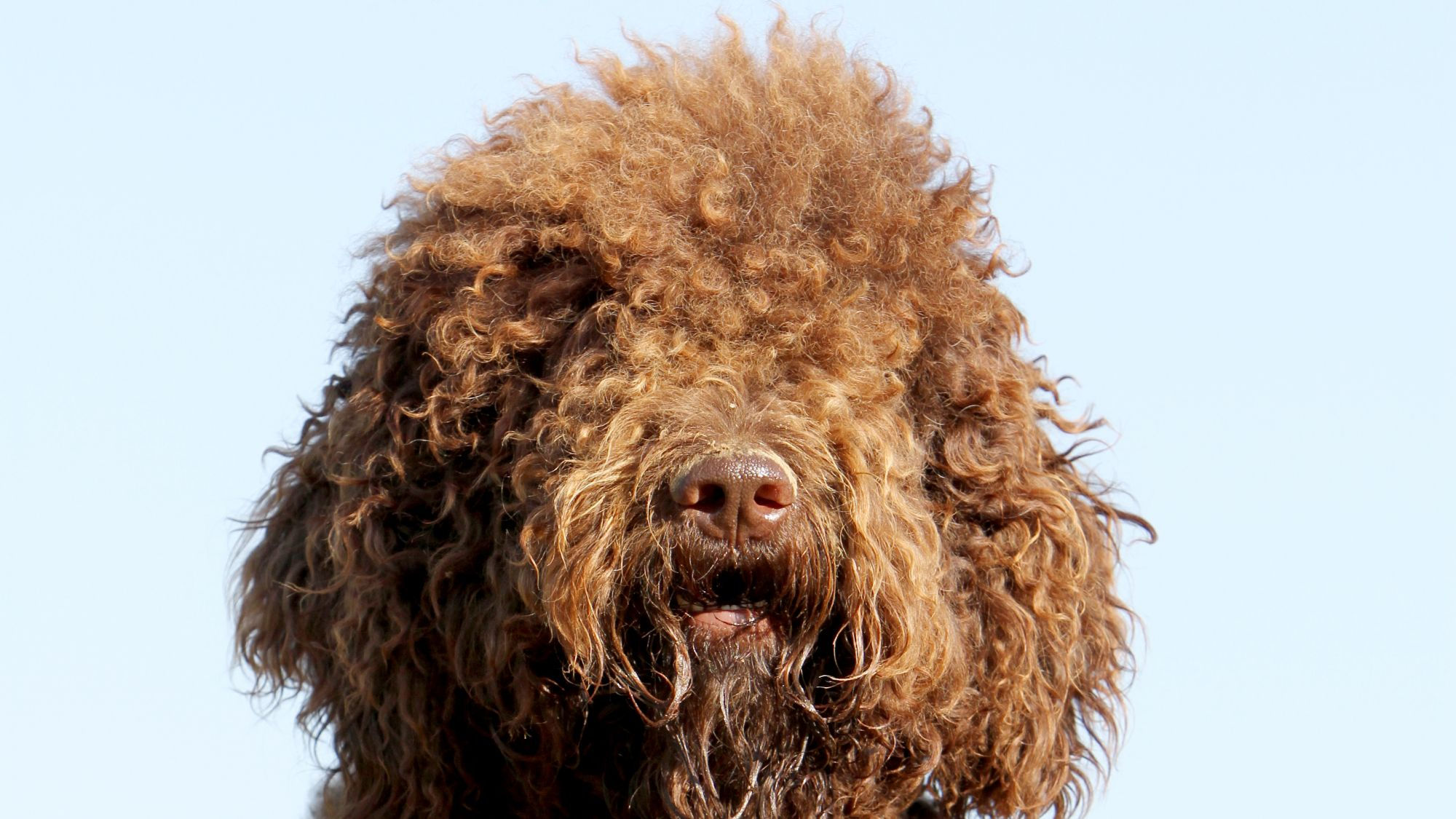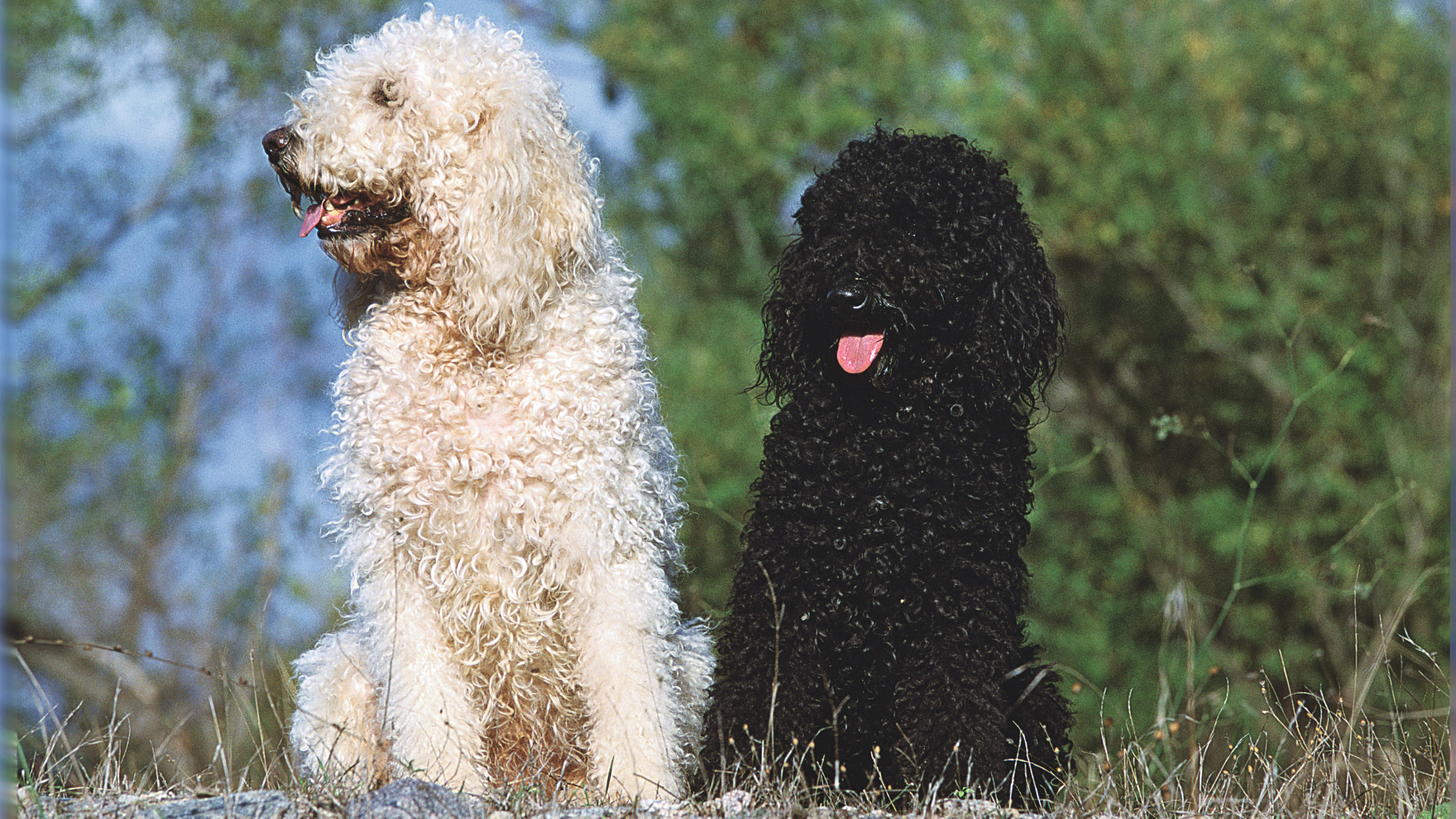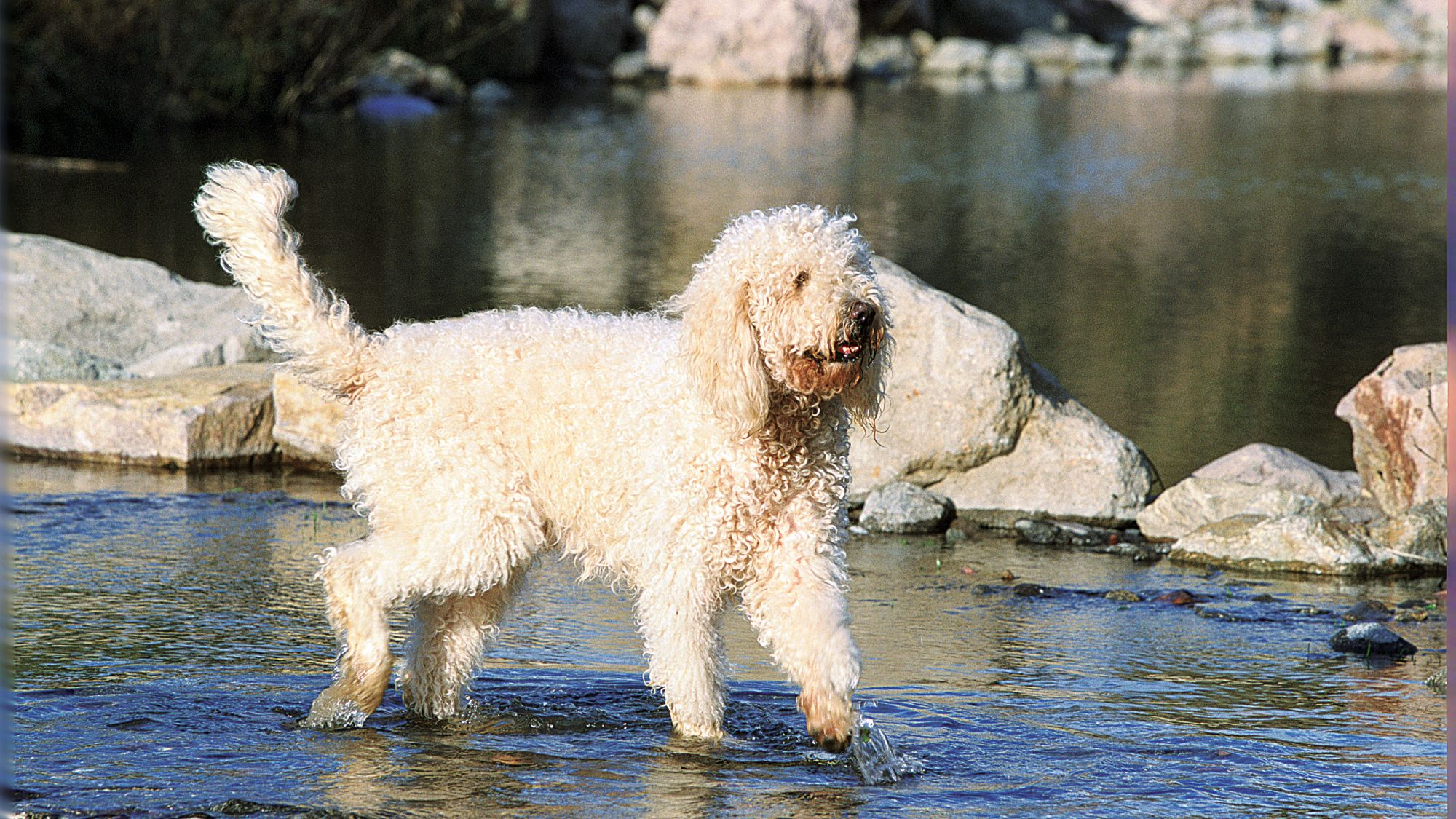
Let's talk Barbets
Looking not unlike a character from Fraggle Rock, these shaggy bundles of fun are hard to resist. In spite of their cute, comical appearance, however, the Barbet is actually a highly intelligent and adept water dog that has traditionally been used to hunt waterfowl in their native France. With their even-tempered and very sociable personality, Barbets make great companions, too, and form strong attachments to their human families. And if you’re wondering how they got their name, it comes from the French word “barbe”, meaning beard.Official name: Barbet
Other names: French Water Dog
Origins: France

| Drooling tendencies |
|
Warm weather? | |
| Shedding level | 
|
Suited to apartment living? | |
| Energy level (high, low, medium) *: | Medium to high | Family pet? * |
 |
| Compatibility with other pets |  |
Can stay alone?* |
* We advise against leaving pets alone for long stretches. Companionship can prevent emotional distress and destructive behaviour. Speak to your veterinarian for recommendations.
Every pet is different, even within a breed; this snapshot of this breed’s specifics should be taken as an indication.
For a happy, healthy and well-behaved pet, we recommend educating and socialising your pet as well as covering their basic welfare, social and behavioural needs.
Pets should never be left unsupervised with a child.
All domestic pets are sociable and prefer company. However, they can be taught to cope with solitude from an early age. Seek the advice of your veterinarian or trainer to help you do this.


| Baby age: | Birth to 2 months |
| Puppy age: | 2 to 12 months |
| Adult age: | 1 to 7 years |
| Mature age: | 7 to 10 years |
| Senior age: | 10 years plus |

1/7
Get to know the Barbet
All you need to know about the breed
Believed to be an ancestor of the Poodle, the bearded wonder that is the Barbet has been around for several hundred years. For most of this time, they have been used as water retrievers, flushing out game from the vegetation in the wetlands of France. They were certainly made for it with their thick, waterproof coat, athletic build and impressive swimming prowess.
Today, however, the Barbet is rather better known for those picture-perfect looks and their affectionate and playful temperament. Intelligent, sociable and bounding with enthusiasm for everything around them, they make a lovely family pet, and like nothing better than being around their favourite humans. Well, apart from one thing that is …
The Barbet’s devotion to water remains undimmed and they will make a beeline for anything so much as a puddle. Not for nothing do they have the nickname of ‘mud dog’ (don’t say we didn’t warn you ...). They’re a fairly energetic breed too.
Most recognisable for their distinctive woolly fur, the medium-sized Barbet comes in quite a number of colours. These can range from shades of black and grey to brown or fawn, with white markings. Their dark-brown eyes, peering out from beneath their thick fur, completes their Instagram appeal.
Despite these excellent canine credentials, the Barbet remains a surprisingly rare dog breed, with only a few hundred of them outside France. But if you’re lucky enough to come by one, they will bring no end of joy to the household.

2/7
2 facts about Barbets
1. The dog from Atlantis
When we said the Barbet was well-suited to swimming, we weren’t joking. This is a dog that even has webbed feet, helping to propel them powerfully through the water. Their coats are also super-waterproof, with their under-coat usually remaining dry even after long periods.
2. Beating imposter syndrome
The Barbet is thought to be an ancestor of several other breeds, including the Poodle, the Briard, the Bichon Frisé and even the Newfoundland, and is quite often confused with them. Another common mistake is people thinking they are a Labradoodle. However, they are very much their own breed, with their own distinguishing features.
History of the breed
One of the most surprising aspects of the Barbet’s history is that, despite being around for several centuries, they have only received official recognition relatively recently. And not a moment too soon, we say.
Dating back at least to the 16th century (and probably much earlier), they are thought to be a cross between African Shepherd dogs and European dogs. Since then, the Barbet has been used mostly as a hunting dog in their native France. Often seen splashing around in the French wetlands, flushing out and retrieving waterfowl, they would later go on to become popular companion animals as well.
However, the Barbet population has always remained relatively small, almost becoming extinct during the two World Wars, which perhaps accounts for the lack of formal attention over the years. Although the first breed standard was created in 1894, it took until 1980 for a breed club to be formed in France.
Even today, there are just a few hundred of them around the world—and they only arrived in the US as recently as 1994. The Barbet finally received full recognition from the American Kennel Club (AKC) in 2020, placed within the sporting group of dogs.

4/7
From head to tail
Physical characteristics of Barbets
1. Ears
Long, flat ears, at times indistinguishable from their thick fur.
2. Colouring
Colouring can vary from black, grey or brown to tan, fawn or white.
3. Body
Medium-sized, solid body with broad, deep chest.
4. Tail
Low-set tail with a gentle hook at the tip.
5. Coat
Long woolly coat with an abundant ‘moustache’ and ‘beard’.

5/7
Things to look out for
From specific breed traits to a general health overview, here are some interesting facts about your Barbet

6/7
Caring for your Barbet
Grooming, training and exercise tips
It’s perhaps no surprise that the Barbet’s curly coat can be a magnet for twigs, leaves and other natural debris—as well as mud. So, when it comes to grooming your Barbet, they will require a good brush several times a week, gently teasing out any mats in their fur, along with baths when they need it. Their teeth should be brushed daily, ears checked frequently and claws clipped as often as —though the good news is that the Barbet is a fairly low-shedding breed.They’re quite high maintenance when it comes to exercise, needing at least an hour a day and ideally more. In terms of training, the Barbet normally excels at this, and they can often go on to do well at disciplines such as agility, obedience and more. The earlier you start, the better the results, as with any dog.
7/7
All about Barbets
Dating back many centuries, nobody is sure of the Barbet’s precise origins. However, it is generally accepted that they are descendants of African Shepherd dogs that were crossed with European dogs. The resulting breed, the Barbet, then became prevalent in France.
With the right training and socialisation, Barbets make a wonderful companion that likes nothing better than being at the heart of the family. Indeed, the Barbet is known for their kid-friendly credentials. They do, however, require plenty of mental and physical stimulation to keep them contented.
translations.feature.breeds.otherbreeds
Read more on this topic

How your dog's nutrition needs change with age

How to adopt a dog

Things to consider before getting a dog
Sources
1 - Veterinary Centers of America https://vcahospitals.com/
2 - Royal Canin Dog Encyclopaedia. Ed 2010 and 2020
3 - Banfield Pet Hospital https://www.banfield.com/
4 - Royal Canin BHN Product Book
5 - American Kennel Club https://www.akc.org/


